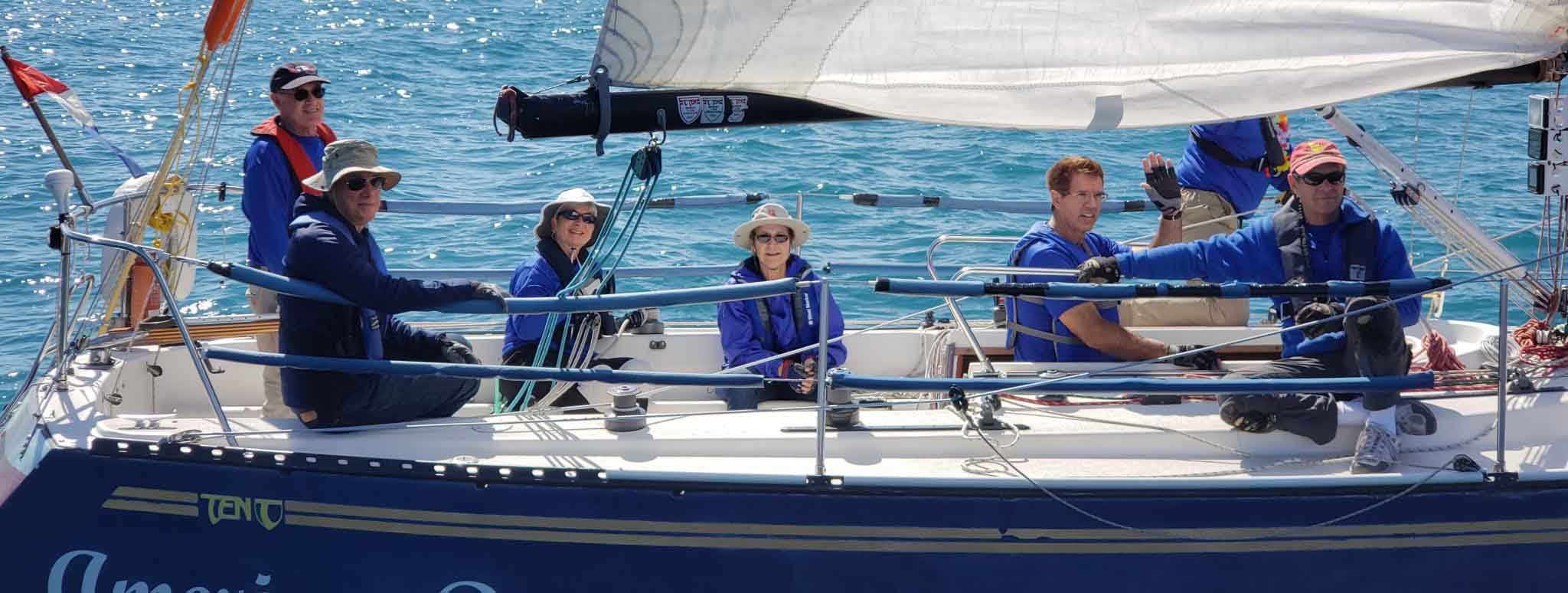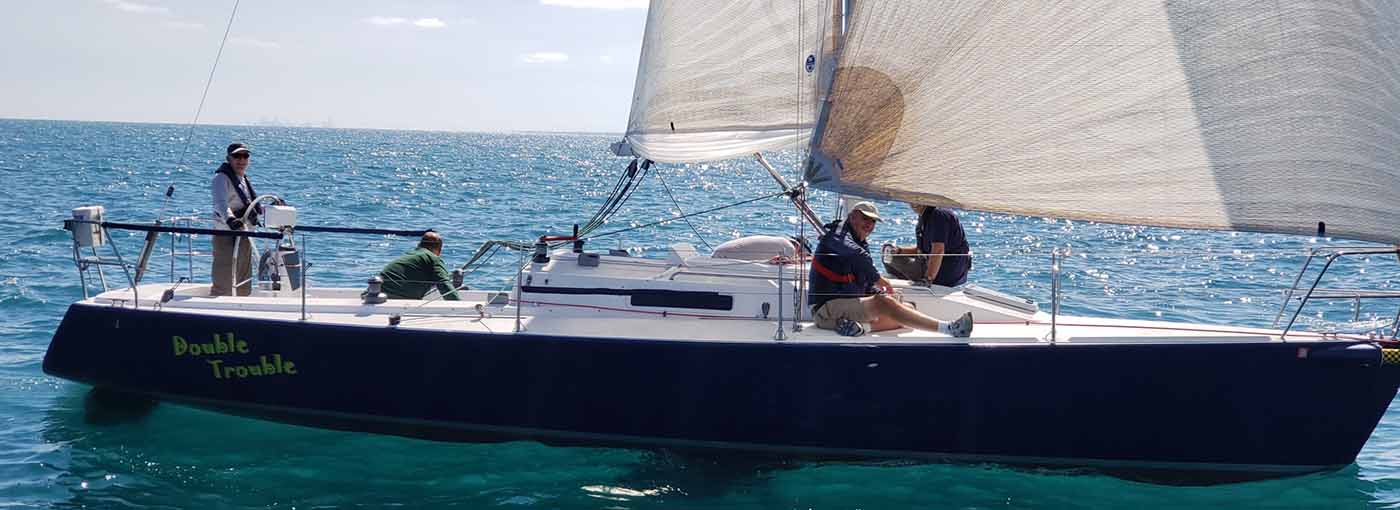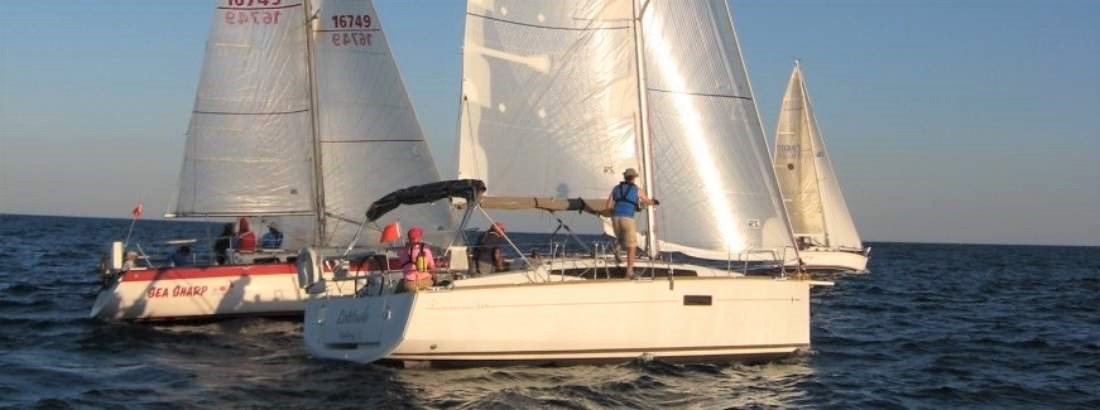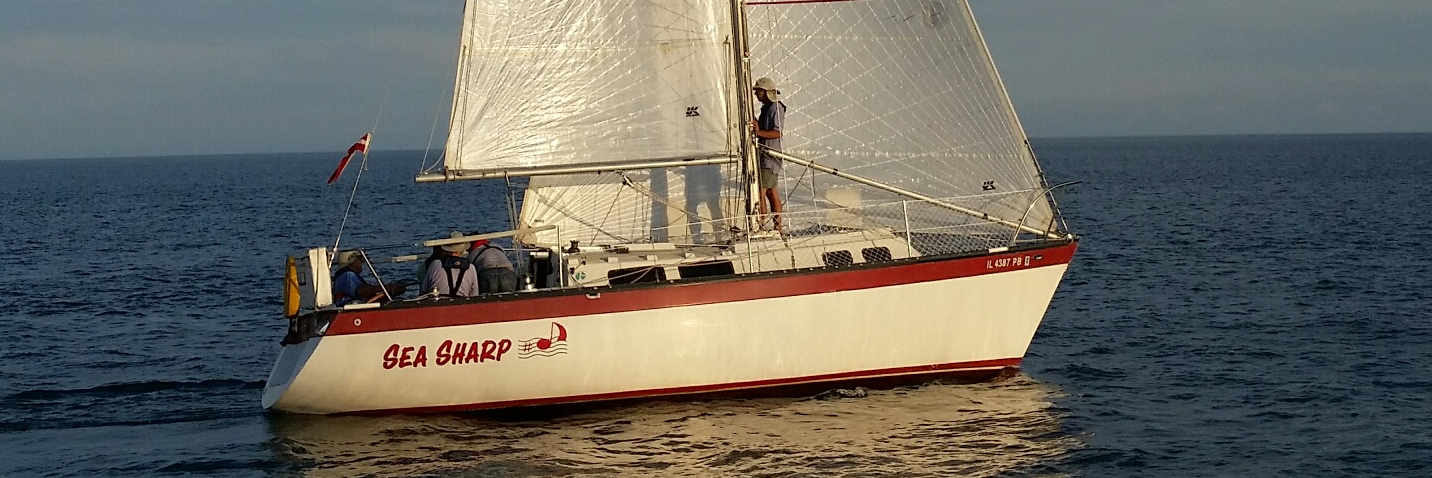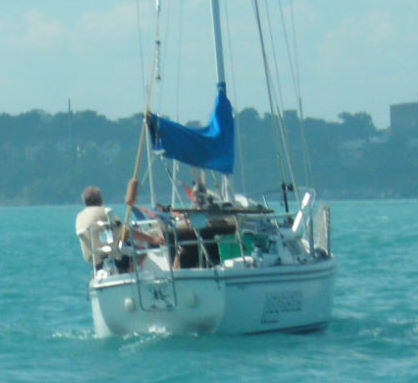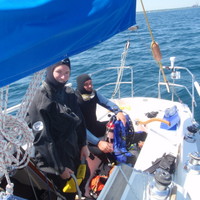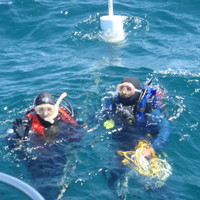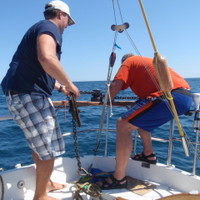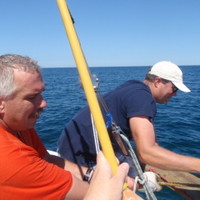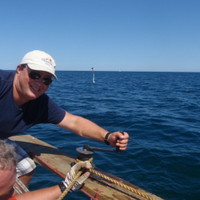(click on the thumbbail photos to view larger images)
As many know, it's been a tough summer on our race buoys. Fortunately, Kevin, John, and Marian recovered the center mark ground tackle on Saturday, July 30th. A successful mission, thanks!! In Kevin's words:
Marian and I dove, John worked the surface, which is a very important job in a recovery dive. Surface support is also the most frustrating because you can only see the bubbles and don't really know what is happening below.
We arrived at the center mark and checked the visibility by observing the rode, It looked to be about 25' because we could see the rode float that was attached to the anchor line at about 25'. We tied up to the center mark and geared up for the dive.
We knew from past position checks that the ground tackle should be about 50' -100' south of the current mark. I geared up first and did a quick bounce to the bottom to assess the dive conditions before Marian joined me in the water. As I climbed into the water for the first time I noticed a significant current. John later informed me that my knot meter was reading about 0.3 knots. It was an energetic swim to the front of the boat to grab a hold of the mark's anchor line. I used the anchor line to pull myself down to the bottom.
On that quick trip down I found an incredible thermocline at about 30'. The water temperature went from about 70 to 40 but the visibility improved significantly from 25' to about 100'. Below the thermocline there was no current either. I did not see the lost ground tackle so I immediately surfaced to report the conditions and plan our dive.Our plan was to take about 100' of line and tie it to the rode float which is about 25' off the bottom and swim a circle around the anchor at that depth to give us a search area that was about 200' in radius. Our search started to the east and then headed clockwise to the south.
As we reached the southern most point in our search pattern I could see the anchor chain, rode and float just at the edge of my visibility to the south. I got Marian's attention and pointed to what I saw. She acknowledged that she saw it too. I then handed her the end of the guide line, signaled for her to stay there and swam over to the ground tackle. I retrieved the cut end and swam back to Marian. We tied the end of the recovered rode to the search guide line and then returned along the guide line to the mark anchor rode.
When we reached the anchor rode I started to untie the guide line from the float. Marian signaled that she was running low on air and needed to start towards the surface. I signaled that it was OK for her to leave me and she started her ascent before me.(She ran low on air before me because she started with a tank that was only about 1/3 full) When I was reached the surface Marian had already informed John that we had found the lost tackle. (John had already figured that out because he was watching our air bubbles and gauging our progress. He saw the bubbles separate and when they came back together they started to return instead of continuing the search pattern.)
We passed the end of the guide line, that was now attached to the ground tackle, to John. He pulled it taught and cleated it to the bow. Marian and I then exited the water. John helped us out of our gear. When Marian and I had finished removing and stowing our dive gear we prepared the boat for raising the ground tackle. The club has a board with a winch (donated by Shel D) and a roller that can be lashed to the deck to help raise the mark anchors. Pulling up the center mark tackle is especially difficult because of how much hardware is down there. It is intended to hold the largest boats in our fleet in the worst conditions that we would typically be racing in.
When the boat was ready we cast off the center mark and started the long slow grind to raise the ground tackle. John worked very hard to winch the anchor out of the bottom, it was set in hard by His Wings a month 
Follow our Commodore, John Hoskins, aboard "Bodacious 3" in the Transpac race to Hawaii!! Go here for watching the progress: http://live.adventuretracking.
Update: Unfortunately, Bodacious 3 had to withdraw due to a crew shoulder injury. Oh well, at least now John can do the Hook race!



